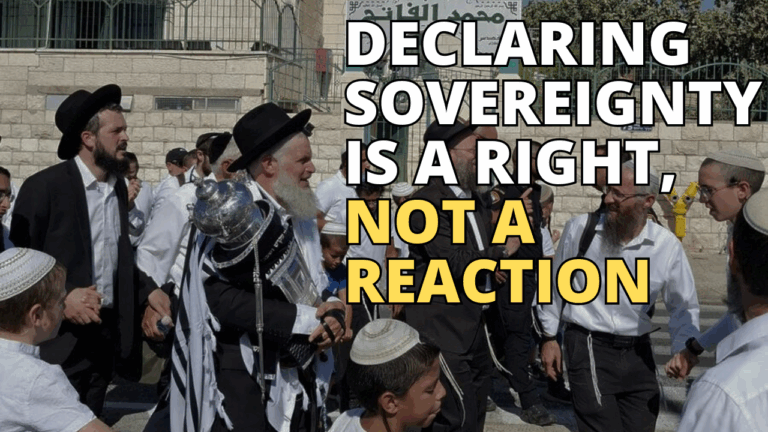Sustainability, Sovereignty, and a United Jerusalem
For nearly 2,000 years the Jews living in the Land of Israel and those dispersed in exile longed for the day that the Nation of Israel would restore its sovereignty over its holy capital, the resting place of the Divine Presence, and the seat of both the earthly Jewish Kingship and the heavenly one.
In 1967 on the 28th of Iyar, Israel liberated the divided Jerusalem, reuniting the city and reclaiming focal point of the Jewish people – the Temple Mount, the Old City, and the environs that surround it like the City of David, the Mount of Olives, Shimon HaTzaddik, and the Old Yemenite Village/Shiloach.
We have bought houses, established communities, and reclaimed stolen property in all of these areas. Jerusalem has been united on paper for 50 years, but in many ways it still remains divided – at least psychologically. Many people in the West and on the Left want to use the municipal vacancy in the eastern Jerusalem Arab neighborhoods as proof of why the city should G-D forbid be redivided.
However, the opposite is true. Dividing a city like Jerusalem ignores the historical justice of Zionism and nullifies the return of the Jewish people to their ancestral homeland and capital. More than this, the arabs in Jerusalem are newcomers, who with the British help, used violent pogroms in the 1920s, 1930s, and 1940s to chase out the indigenous Jewish population.
So how do we bridge the gap between the two sides of Jerusalem?
There has been tremendous success in recent years in reestablishing the old communities of the Yemenite Village, Old Jewish Quarter, and Shimon HaTzaddik (Sheik Jarrah). In the face of international pressure, leftist courts, and arab violence, Jews have returned and strengthened their presence in these vital areas.
However, the next stage of national rebirth requires more than just moving more and more families into strategic neighborhoods, which is of course very important. What is required is a redemptive approach to Jerusalem.
Jerusalem’s development is more than just the light rail, or eateries, work spaces, or museums. Jerusalem at its core is about creating a divine space in this world, where everywhere one walks there is the blend of spirit and physical. This is why design and development of all parts of the city requires a way of thinking that blends nature, spirituality, and technology with the hope of the future.
Sovereignty over the whole city mandates that we use space differently. That when we return to neighborhoods that had been stolen from us – our return is not just to a building that had been occupied by squatters, but rather our return is in order to change the very space we have returned to, by uplifting how it is used and displayed.
By utilizing urban space in a sustainable manner – through access routes, foot paths, urban agriculture, and biophilic green spaces, we are not only able to reclaim buildings, but redeem the land that surrounds our residences. We are able to increase sovereignty throughout the entirety of the city no matter which area.
A sovereign space is not just about police and transportation. It is a space of connectivity, contiguity, and interaction. The next stage of the Redemptive process requires us to merge spirit and physical; light and vessel altogether – ultimately making a place that actualizes the destiny of the Jewish people.
Yom Yerushalayim is almost upon us. With 54 years after our holy city’s reunification, it is time to uplift it and merge both the heavenly and earthly Jerusalem together. By properly utilizing the vessels here in this Jerusalem below we can create a space of light and joy for all who come.



